Welcome to Newsstand101.com – DirectEdition101.com
This website has been created to provide visual help for identifying the differences between Direct editions and Newsstand editions of comic books.
2023 UPDATE – the following video has been created for an introduction.

Since about 1993, both Newsstand and Direct Edition barcodes have a left side with 12 numbers. The presence of barcodes is not enough to identify which is which. Many listings for direct edition comics from the 1990s to the present are incorrectly described as newsstand. Both editions have 12 digits on the left side.

Newsstand UPC (Universal Product Codes) have 14 numbers. There are 12 on the left side, and a second group of barcode lines with 2 numbers on the right.
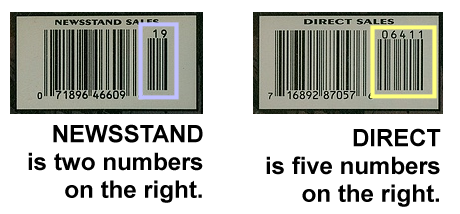
Direct Editions with barcodes have 17 numbers. There are also 12 numbers on the left side, but the second group of barcode lines for a Direct Edition is wider, having 5 numbers on the right.
Direct Edition UPC boxes do not necessarily include barcodes. Many Direct Edition comic books before the 1990s have artwork, white space, or a message in the UPC boxes, instead of any barcode lines. If the barcode has 2 numbers on the right WITH a diagonal slash printed through the lines, it is an early Direct Edition (the slash means NOT newsstand).
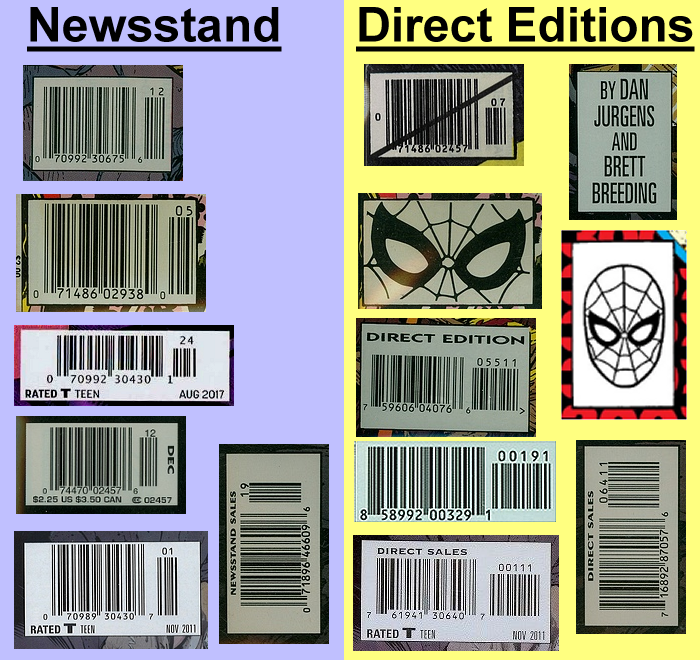
Notice: all of the Newsstand barcodes have only 2 digits on the right side.
With practice, it is possible to easily identify Newsstand editions online, even with the smallest photos. Look at these four comics described as Newsstand editions:

Three of the barcodes have “skinny lines” on the side for 2 digits. One of these three barcodes is “wider” on the side for 5 digits. It is a Direct Edition even though the book is incorrectly described as “Newsstand”.

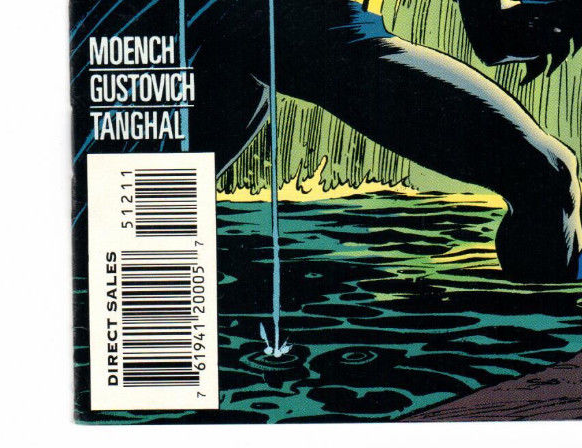
What does it matter?
Maybe it doesn’t. Maybe there is no difference in the prices. Maybe a collector doesn’t care if a comic is Direct Edition, Newsstand Edition, a reprint, a variant cover, or a coverless book, since the contents are the same for all of these types of comic books.
Maybe it does. Maybe a collector has determined that their favorite books aren’t found in Newsstand Editions very often. Maybe a collector has determined that they only want to collect Direct Editions. Maybe the prices being paid for each type are different, and one is “worth more” in terms of resale value than the other.
The beginning. For decades from the 1930s to the 1970s there were no Direct Editions, and all comic books were returnable if they did not sell. By the late 1970s, enough comic book stores were ordering extra copies of comic books for publishers to offer a discount if the books could not be returned. Without some difference between which comics were returnable and which comics were not, the publishers might receive returned copies of books that were originally purchased at a discount. Direct Edition comics were created to easily determine which books were unreturnable.
The end. From the 1970s to the 2000s, there were few collectors who cared much about the differences between Direct Editions and Newsstand Editions. The cancellation of the Newsstand Edition programs by Marvel and D.C. Comics in the 2010s caused more collectors to begin noticing the differences associated with finding later Newsstand Editions. The differences have caused some confusion for those who think that a barcode automatically means “Newsstand”. As shown earlier on this page, the barcode does mean “Newsstand” if there are 14 digits. The barcode means “Direct” if there are 17 digits.
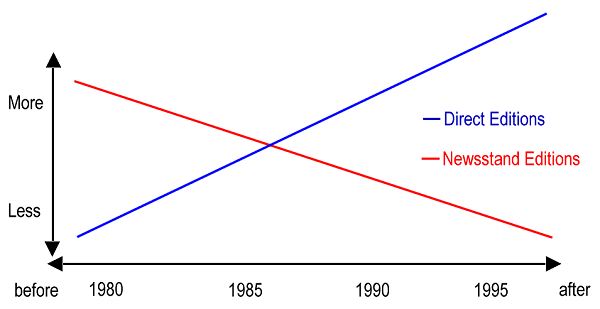
The graphic above is not intended to be exact. The general idea is that the introduction of Direct Editions in the late 1970s did not immediately make Newsstand Editions less common. It was likely sometime in the 1980s when Newsstand became less common than Direct Editions, and the percentage of books printed as Newsstand became lower until the program was ended.
Is one better than the other?
It depends.
Some collectors prefer Direct Editions because they often have artwork in the UPC box or no UPC at all, instead of barcode lines that could be described as “ugly” or because the UPC box may obscure the artwork on the cover.
Compare Direct Edition (left) and Newsstand Edition (right) for Spawn #1:
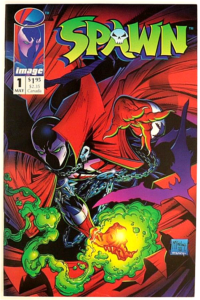
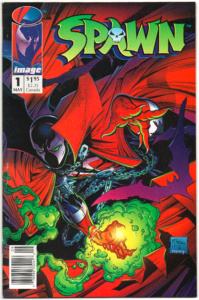
On one hand, it is easy to understand how the barcode of the Newsstand Edition could “distract” from the artwork of the Spawn #1 cover. On the other hand, collectors who prefer the Spawn #1 Newsstand Edition will also notice that the Newsstand is available for sale less often and the completed auction prices for Newsstands are higher than the completed auction prices for Direct Editions.
Direct Editions for Spawn #1 were ordered so heavily by comic book shops, Spawn #1 outsold each of the twelve issues of Amazing Spider-Man in 1992. Because Image was a new publisher, there were far fewer Newsstand Editions printed for Spawn #1 than Direct Editions for Spawn #1.
The back issue market for Spawn #1 has demonstrated a clear difference in the prices for Spawn #1 Newsstand and Spawn #1 Direct Edition, even if some collectors still do not make any distinction.
For the year of 2018, GPAnalysis.com reported 37 sales for CGC 9.8 Spawn #1 Newsstand with an average price of $349 and 657 sales for CGC 9.8 Spawn #1 Direct with an average price of $118. Using only this sales information, Spawn #1 Direct sold about 18 times more often than Spawn #1 Newsstand with the price of the Newsstand being about 3 times the Direct.
Is that everything?
No, there is certainly more to know. The information above is useful most of the time, but a few titles, a few publishers, a few situations are different. Future posts on this site will discuss more details and exceptions, but this post does cover the essential information about Newsstand and Direct Editions.